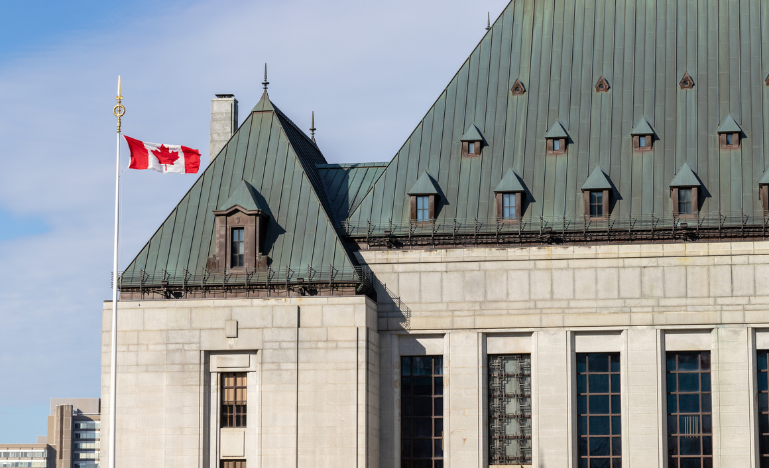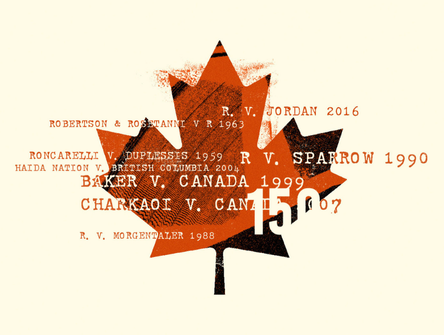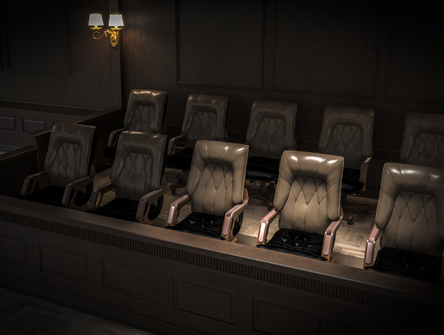Supreme Court finds judge-only trials were acceptable during the pandemic
Legal observers expect broader application of the decision beyond COVID-related cases

In a unanimous ruling, the Supreme Court of Canada has found that for trials held during the COVID-19 pandemic, it was acceptable for judges to consent to judge-only trials over the objections of Crown prosecutors to avoid creating delays.
The Court’s reasoning, however, split 5-2 over where the line was when it came to the Crown’s prosecutorial discretion.
Charged with the second-degree murder of his spouse, accused Pascal Varennes’ trial was set for September 2020, when the pandemic was in full swing. In June 2020, he requested a judge-alone trial to avoid possible delays with a jury trial, which would breach his Charter right to be tried in a reasonable time. The Crown refused to consent, asserting that the public interest favoured a jury trial. However, the judge found the refusal was “unfair or unreasonable in the circumstances” and allowed the judge-only trial.
Varennes was acquitted of second-degree murder but was convicted of manslaughter. The Crown appealed. The Quebec Court of Appeal concluded the trial judge did not meet the test of abuse of process for overriding the Crown’s refusal, and declared the trial a nullity. A new trial was ordered. The Supreme Court allowed the appeal and sent the case back to the Court of Appeal to consider the other grounds of appeal.
“The trial judge found as fact that without intervention, the appellant’s Charter rights were at substantial risk,” Justice Andromache Karakatsanis wrote for the majority.
“Given the pandemic emergency, she concluded that proceeding with a jury trial would likely breach the appellant’s right to be tried within a reasonable time, and so violate s. 11(b),” she continued.
“I decline the Crown’s invitation to disturb this finding as speculative or to view it with hindsight. These were the early days of the pandemic, marked by uncertainty and isolation, before even the development of a vaccine.”
In his dissenting reasons, which Karakatsanis pointed to, Justice Malcolm Rowe said that in 2020, jury trials posed a grave health risk to jurors. They necessitate gathering hundreds of people indoors for selection, and a second wave of COVID infections was fast approaching. Proceeding with a jury trial under the circumstances would have “burdened an already overtaxed justice system.”
The question of what constitutes core prosecutorial discretion was largely where the break in reasons occurred. The majority felt that it relates to where attorneys general or their agents make decisions that directly affect the nature and extent of the criminal jeopardy a person may face. They said a court may not interfere with that, except to remedy an abuse of process. Non-core prosecutorial discretion can include tactics or conduct before the court which don’t tread on the constitutional role of the attorney general as chief law officer.
Justice Rowe, with Justice Kasirer's support, felt that the Court should not revive the distinction between core and non-core prosecutorial discretion. He said the Crown in this particular case engaged in abuse of process in the exceptional circumstances of the pandemic, which was sufficient grounds for the trial judge to override their refusal.
Kyla Lee of Acumen Law Corporation in Vancouver, and the past chair of the CBA’s criminal justice section, says the decision helps clarify the circumstances when an interlocutory appeal can be brought in a criminal case, and when the Crown can appeal from an acquittal where there might be a jurisdictional error.
The majority noted that the path to overriding prosecutorial discretion could come from either abuse of process or in applying Section 24(1) of the Charter, which allows superior courts to order an “appropriate and just” remedy to a rights violation, including the anticipation of probable future breaches.
Lee says the majority’s dealing with this is important.
“They accepted that the violation of the 11(b) right [to a trial in a reasonable time period] was inevitable, even though there wasn’t a specific finding by the trial judge about that.”
This is useful, particularly for people mid-trial or about to start a trial, who are facing adjournments for issues outside of their control, but wouldn’t necessarily fall within exceptional circumstances.
“It’s helpful for people to be able to rely on a broader range of remedies under 24(1),” Lee says, noting that the usual remedy for an 11(b) breach is a stay.
It opens the door for people who realize their rights are going to be breached based on how things are going to seek a remedy at the time.
“That probably also will streamline things in a lot of cases where otherwise the 11(b) applications are kicked down the road, where things are passing the 18- or 30-month ceilings,” she says.
It may also lower the standard for proving a breach—which the concurring decision took issue with—but as a defence lawyer, Lee is in favour.
Matthew Shadley, a partner at Shadley Knerr in Montreal and president of the CBA-Quebec’s criminal law section, says that the Court found a way of looking at the issue of what is a core and non-core prosecutorial discretion, which doesn’t often come up.
“My first impression is that we’re likely to see more litigation surrounding this idea of what tests should be used, and what standard we should start reviewing,” he says.
“You’re going to have to deal with this much higher standard of abuse of process when it’s a core discretion, which is to continue a process or not, or jeopardy-changes, versus non-core discretion, like tactics.”
He believes that defence counsel will start trying to see how far this distinction can go, and what decisions they can have reviewed based on the Charter and the balance-of-probability standard. That’s a departure from when they believed there was no chance to meet the abuse of process standard.
Lee likes how the majority characterized it, because it clearly identifies the what and why to charge, and how the matter will proceed.
“The why and the how—you can distinguish that in cases,” Lee says. “That’s a really bright-line rule that’s easy to follow, unlike what the concurrence was suggesting.”
As for whether this decision is likely to be confined to COVID-related cases or if there will be broader application, Shadley doesn’t think so. Instead, the common law will take principles from this decision and apply them to new circumstances that arise.
“These were obviously exceptional circumstances, where a lot was going on. I remember we were going to court with masks, and there was plexiglass between each juror,” he says.
“I think lawyers are going to start unpacking this, dissecting the ruling, and applying it to different situations. I’m curious to see the creativity of defence counsel in how they apply these principles to the cases they’re dealing with.”


